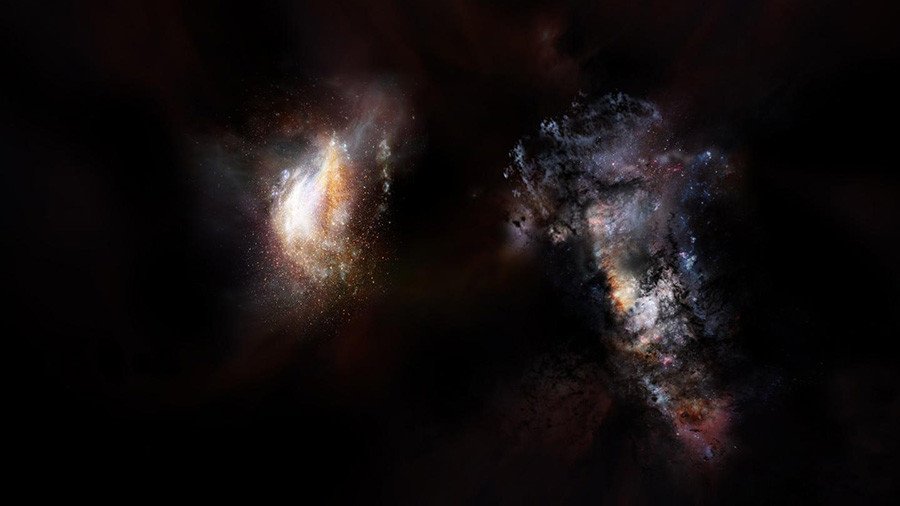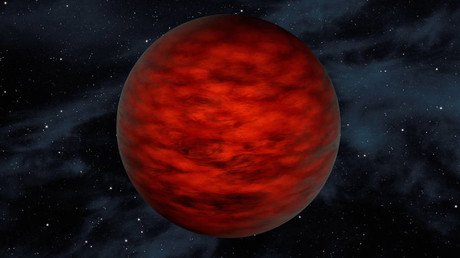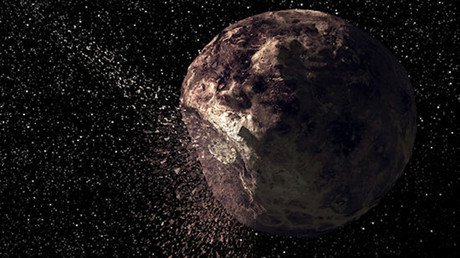Galaxy pair contain dark matter halo at least 1 trillion times the sun's mass – study

A newly discovered pair of gigantic ‘Goliath’ galaxies contain a trove of black matter so enormous that scientists say it almost calls into question our current understanding of the evolution of the cosmos.
Published in Nature, the study observed two merging galaxies containing a dark-matter ‘halo’ with a mass of more than 100 billion suns. This is “among the rarest dark-matter haloes that should exist in the Universe at this epoch,” the study noted.
Galaxy ‘photobomb’ leads to stunning black hole revelation (VIDEO) https://t.co/BWgDkIqADr
— RT (@RT_com) December 1, 2017
The larger of the galaxies is the “most gargantuan” ever seen in the universe within the first billion years of the Big Bang, according to a statement from the Center for Computational Analysis at the Flatiron Institute in New York City where the research was carried out.
It contains a whopping 273 billion suns’ worth of gas and dust, while the smaller one is comprised of 40 billion such masses. “Either of these galaxies on its own would be extreme, and here you have two of them together,” study co-author Chris Hayward said.
Following the Big Bang, these structures began as small variations in the density of the cosmos, but accumulated more and more matter over time due to gravity. Scientists used the prevailing model of how the universe formed to estimate just how big structures of this type could be at any given stage of the universe’s development.
They calculated that when these galaxies existed, their dark matter halo was among the most massive structure possible under the model used. An equivalent structure in the present-day universe would contain an incredible 10,000 trillion suns’ worth of material, according to the scientists.
READ MORE: Astronomers snap ‘intense’ galaxy merger dating back 12 billion years (VIDEO)
“This is one of the rarest and most extreme clumps of dark matter in the universe,” study lead author Dan Marrone said, adding that there are “probably just a handful of objects like this in the whole sky.“
The incredible find was largely accidental, coming to the team’s attention while they were taking a closer look at light sources spotted by the South Pole Telescope in Antarctica. An analysis of the incoming light revealed it was coming from two huge merging galaxies.














